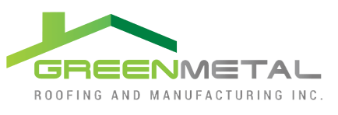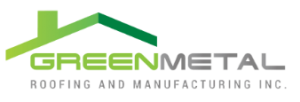Are you considering metal roofing for your home? Here is a guide to help you make an informed decision for your home improvement project:
Material Options
The choice of material can significantly impact the performance, durability, and aesthetics of the roof. Different metal roofing materials have varying levels of durability and resistance to environmental factors, such as wind, hail, and corrosion. Some metals are better suited for specific climates; the right material helps the roof withstand local weather conditions effectively. Choosing a durable material ensures a longer lifespan for the roof, reducing the need for frequent replacement.
Here are some common metal roofing materials:
Steel
Steel roofing is durable and resistant to corrosion. It is generally affordable and comes in various styles and finishes. However, without proper coating, steel roofing can be susceptible to rust.
Aluminum
Aluminum is a lightweight and corrosion resistant roofing material. Because of this characteristic, it can be suitable for homes in coastal areas. However, aluminum roofing can be more expensive than steel roofing.
Copper
Copper roofing is highly corrosion-resistant. It has a long lifespan and provides an elegant appearance. Over time, copper roofs develop a patina, which contributes to its unique aesthetic appeal. However, copper roofing can be expensive.
Zinc
Zinc roofing is corrosion-resistant and has self-healing properties. It has a long lifespan and is considered environmentally friendly. Its initial cost, however, can be higher than other metal roofing materials.
Tin
Tin roofing materials are affordable and lightweight. If not properly coated, however, tin roofs can be prone to rust.
Stainless Steel
Stainless steel roofs are corrosion-resistant and have a long lifespan. They are durable and low maintenance. Compared to other roofing options, however, stainless steel roofing materials can have a higher cost.
When choosing a metal roofing material for your home, it is important to consider your specific needs, budget, and local climate. Understanding the pros and cons of each metal roofing material can help you make informed decisions about the most suitable material for your home.
Roofing Styles and Profiles
Metal roofs come in various styles and profiles, each offering aesthetic and functional characteristics. Here are some common metal roofing styles and profiles:
Standing Seam
Standing seam is a popular and versatile profile characterized by raised seams that interlock vertically along the roof surface. With its raised seams, this style of metal roofing can offer excellent water resistance, minimizing the risk of water penetration. The standing seam profile provides a clean and modern appearance to homes. This style is architecturally versatile and is suitable for contemporary and traditional designs.
Corrugated
Corrugated panels feature a series of parallel ridges and grooves, creating a distinctive wavy pattern. This type of metal roofing is lightweight and cost-effective and provides good water drainage due to its corrugated design. Corrugated metal roofing offers a traditional and industrial appearance and is often used in agricultural and industrial settings.
Metal Shingles or Tiles
Metal shingles or tiles mimic the appearance of traditional roofing materials like asphalt or wood shingles. This style of metal roofing provides durability and longevity and offers a classic and upscale aesthetic. Metal shingles or tiles are usually lightweight and easy to install.
Durability and Longevity
Metal roofs are considered durable due to several inherent characteristics that contribute to their longevity and resilience. Many metal roofing materials, such as aluminum, zinc, and copper, exhibit natural corrosion resistance. Coatings, such as galvanization and special finishes, provide additional protection against corrosion. Certain metals, like zinc, possess self-healing properties. Over time, zinc can develop a protective layer that helps repair small scratches or imperfections.
Metal roofs are generally strong and tough, with the ability to withstand impact from hail, debris, and extreme weather conditions. Resistant to elements like fire, wind, and now, metal roofs do not rot, warp, or become susceptible to issues like mold or mildew.
The expected lifespan of different metal roofing materials can vary based on factors such as material composition, coating, installation quality, and environmental conditions. Metal roofing materials, such as steel, aluminum, and tin, have an expected lifespan of 40 to 70 years. Some roofing materials, like copper and zinc, can last over 70 years.
Energy Efficiency
Metal roofs possess several energy efficient properties that positively impact energy savings.
Reflectivity
Metal roofs, especially those with light-coloured or reflective finishes, have high reflectivity. This reflectivity helps reduce the absorption of solar heat, keeping the roof surface cooler. This, in turn, contributes to lower indoor temperatures and reduced cooling costs.
Emissivity
Emissivity measures a material’s ability to release absorbed heat. Metal roofs often have high emissivity, allowing them to radiate heat efficiently. High emissivity facilitates the quick release of absorbed heat, preventing the roof from retaining excessive warmth and contributing to energy savings.
Cool Roofing Technology
Some metal roofing systems are designed as “cool roofs,” incorporating technology that enhances reflectivity and emissivity. Cool roofing technology maximizes the roof’s ability to reflect sunlight and release absorbed heat, reducing the overall heat gain in the building and lowering cooling requirements.
Metal roofs are also compatible with various insulation materials that further enhance energy efficiency. Furthermore, metal roofs can often support the installation of solar panels. With solar panels, homeowners can generate renewable energy and reduce their dependence on conventional energy sources. By leveraging these energy efficient properties, metal roofs contribute to lower energy consumption, reduced energy bills, and a more sustainable and environmentally friendly approach to building design.
Installation Considerations
When it comes to metal roofing, professional installation is crucial for successful performance and longevity. Metal roofs have specific installation requirements, including correct fastening methods, spacing, and flashing details. Professional installers have the expertise to follow manufacturer guidelines and industry best practices, preventing mistakes that could compromise the roof’s integrity. Professional installers are trained to properly seal seams, edges, and penetrations, ensuring a watertight roofing system. They also ensure adequate ventilation to prevent issues such as moisture buildup and attic heat retention. Professional installation enhances the performance of the roof and contributes to its long-term durability.
Maintenance Requirements
Compared to other roofing materials, metal roofs are generally considered low maintenance. However, it is important to conduct periodic maintenance to ensure optimal performance and longevity. Here are some maintenance requirements for metal roofs:
Regular Inspections
Conduct visual inspections to check for signs of damage, loose fasteners, or areas that may need attention. Look for debris buildup and inspect flashing. This type of inspection can be done annually or biannually.
Gutter Cleaning
Clean gutters and downspouts to prevent debris accumulation. Ensure proper drainage to avoid water backups. Gutter cleaning can be done seasonally or as needed.
Coating Inspection
If the metal roof has a protective coating, inspect it for wear and deterioration. Depending on the coating type, this inspection can be done every 5 to 10 years. Reapply coatings as recommended by the manufacturer.
Professional Inspection
Schedule a professional inspection to assess the overall condition of the roof, including seams, flashing, and potential issues that may require expert attention. This can be done every 5 to 10 years or as needed.
Homes in harsh climates or areas prone to severe weather may require more frequent inspections and maintenance. Older roofs may also require more frequent maintenance, as wear and tear accumulate over time. By following a regular maintenance schedule and addressing issues promptly, homeowners can ensure their metal roofs remain in good condition and continue to provide long-lasting protection for their homes.
Cost Considerations
The costs associated with purchasing and installing a metal roof can vary based on several factors, including the type of metal, the roofing system’s complexity, and the local market.
Material Costs
Metal roofing materials vary in price. Common metals include steel, aluminum, copper, and zinc, each with its own price range. Higher-end metals or specialty coatings may increase material costs.
Installation Costs
Labour costs for installing a metal roof depend on factors such as roof size, complexity, and the expertise of the contractor. More intricate roof designs or challenging installations may incur higher labour costs.
Roof Design and Complexity
The roof’s design, slope, and complexity influence the installation difficulty and associated costs. Steeper roofs or intricate designs may require more labour and affect the overall price.
Coating and Finish Options
Specialty coatings or finishes, such as reflective coatings for energy efficiency, may add to the overall cost. Premium finishes or custom colours may have higher associated costs.
While the upfront costs of purchasing and installing a metal roof may be higher, the long-term savings and benefits can make it a cost-effective investment over the life of the roof. Metal roofs have long lifespans, low maintenance needs, and contribute to energy efficiency. The added durability and energy efficiency of a metal roof can enhance the resale value of a home, contributing to long-term financial benefits.
When considering a metal roof, it is advisable to consult with a professional who can factor in local climate conditions, building codes, and energy efficiency requirements and offer guidance for metal roofing that aligns with your preferences, budget, and long-term goals.


